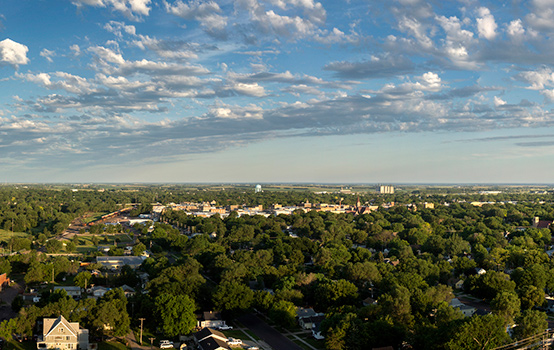Schools are intensely segregated in many of the nation’s (outwardly progressive) college towns.
For many of us who study and write about school segregation, a bitter irony confronts us every day: The communities surrounding the colleges and universities where we work, and where many of us live, themselves tend to be quite segregated.
Search online for the “best college towns” in the country and you’ll see glossy images of places like Boulder, Colo. (0.9% Black, according to the 2010 U.S. census), Ithaca, N.Y. (6.7%), Ames, Iowa (3.4%), State College, Penn. (3.8%), and Corvallis, Ore. (1.1%). Meanwhile, the neighboring towns often look starkly different. For example, in East Lansing, Mich. — the home of Michigan State University — 6.8% of residents are Black, while the figure for the adjoining City of Lansing is 23.7%.
To some in academia, the demographic makeup of college towns is precisely what makes them attractive. For example, one researcher noted that “When smart people cluster together, innovation occurs, productivity rises, and growth occurs. This is undoubtedly a good thing. Thanks to educational segregation, the cities and college towns in which many of us live have become bright spots in the American economy” (Domina, 2007).
In this case, the author’s intent may have been worthy: He argued that college towns in the rural Midwest ought to create incentives for academics to relocate there, as a means of reinvigorating depressed parts of the country. Yet, the larger implication is troubling: Many academics have chosen to live in exclusive enclaves. Overall, this isn’t a boon for struggling regions or the economy at large. Rather, it is part of the same blight that affects much of the country, and which harms all of us.
When we look at the residential locations preferred by college professors, we see a kind of segregation that appears, on the surface, to have to do with wealth and educational attainment, but which is very much about race, too. As the Center for American Progress argued in a recent report, “Rising income inequality has contributed to these trends of economic segregation and thus further exacerbates many of the nation’s student achievement issues” (Boser & Baffour, 2017). However, recent rises in income inequality are themselves fueled by racist policies and practices — having to do, for example, with school funding, student assignment decisions, and tracking — enacted in previous generations (Florida & Mellander, 2015).
Regardless of their stated beliefs, many academics are disinclined to tear down these policies and practices, from which they have benefited enormously. It’s no secret that many people residing in highly educated college communities have deeply internalized beliefs about intelligence and merit, as defined by performance on standardized achievement tests. The path to their own elite opportunities began with their selection into advanced ability groups in elementary reading and math, to their assignment to gifted and talented programs in the middle grades, to their enrollment in tiered courses in high school.
In turn, when they become parents, many academics start building their children’s college application portfolios literally from birth, paying for language immersion preschools, early music lessons, summer enrichment opportunities, and more. In subsequent years, they will raise funds for high-end playground equipment, field trips, and classroom resources, even while challenging any and every effort to detrack or rezone their children’s school, particularly if that would mean more exposure to children of color from economically challenged families. And if they don’t get what they lobby for, they will abandon the public school system for private schools.
None of this is unlike what goes on in affluent towns and suburbs all over the country, college or no college, except that there’s something particularly distressing about the intensity of the self-segregation, and self-regard, seen among the academic elite who dwell in our great centers of knowledge-production and innovation.
Our challenge to ourselves and our colleagues in higher education is blunt: Can’t we recognize the great benefits we give to children — both our own and other people’s kids — when we allow them to grow and thrive together, both in their schools and in their neighborhoods?
References
Boser, U. & Baffour, P. (2017, May 31). Isolated and segregated: A new look at the income divide in our nation’s schooling system. Washington, DC: Center for American Progress.
Domina, T. (2007, January). The geography of educational segregation. Inside Higher Ed.
Florida, R. & Mellander, C. (2015). Segregated city: The geography of economic segregation in America’s metros. Toronto, ON: Martin Prosperity Institute.
Citation: Emdin, C., Moran, P. & Socol, I.D. (2019). Backtalk: For professors, segregation begins at home. Phi Delta Kappan, 100 (5), 80.
ABOUT THE AUTHORS

Christopher Emdin
CHRISTOPHER “CHRIS” EMDIN is a professor in the Department of Mathematics, Science, and Technology at Teachers College, Columbia University.

Ira David Socol
IRA DAVID SOCOL is a former public schools director of educational technology and innovation and now a consultant focusing on school architecture and Universal Design for Learning.

Pamela Moran
PAMELA MORAN is a retired district superintendent and current executive director of the Virginia School Consortium for Learning.










